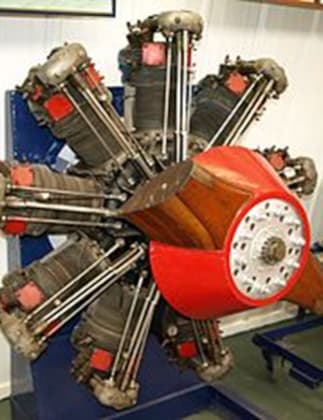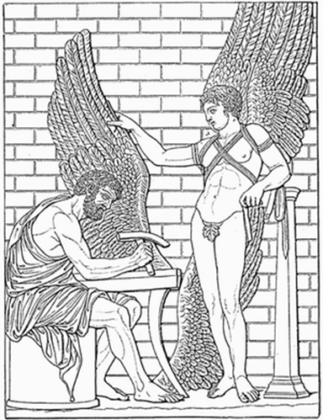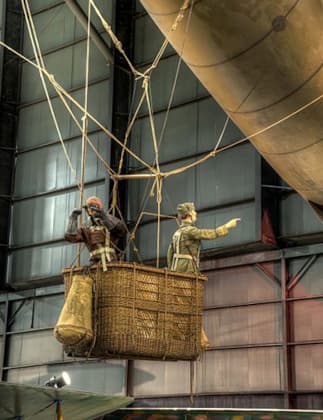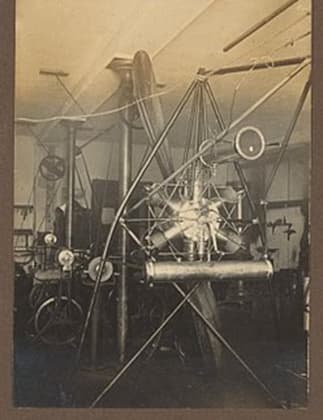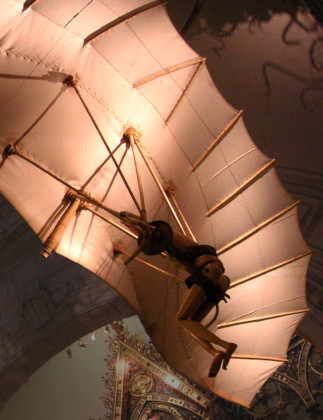Heavier than Air Flight to the Dawn of the 20th Century
Our story begins on a day in 1801. When French military officer André Guillaume Resnier de Goué achieved a downhill glide of 985 feet, while waving wire wings covered over with waxed silky material, and breaking his leg when coming down to earth.
Some thirty years later, French mathematician and brigadier general Isidore Didion remarked, ‘Aviation will be successful only if one finds an engine whose ratio with the weight of the device to be supported will be larger than...
Heavier Than Air Flight 1930
The move from wooden to metal construction quickened pace in 1930. High wing monoplanes became increasingly common with smaller aircraft, although very large bombers and airliners were still mainly biplanes. The new contender, cantilever, low wing monoplanes kept knocking at the door and there was some success.
Meanwhile, the Great Depression stifled good ideas among commercial airliners that might otherwise have done well. By contrast, sales of smaller utility aircraft and personal transport continued to grow, as affordable airplanes found...
Were Kites the Birthplace of Flight in China?
Our imagination takes off as we watch leaves scurrying in the wind, as one takes off and glides a distance. We glance up at a bird lifting in the breeze. Humankind has achieved so many things. Why can we not soar into the air too?
The First Flying Machine Painted on a Wall
The ancients surely pondered over this a long while ago. They would have experimented with different ways to harness leaves, before an artist painted a picture of a...
Heavier Than Air Flight 1922 Moving Forward
1922 continued the uptick in new aircraft design, and construction. Better fighters and bombers were in demand for colonial wars, while seaplanes lined up for innovative aircraft carriers launching from ship yards.
Several innovative fast racing aircraft kept the bar above 200 mph. While passenger aircraft, large and small continued to tempt the new taste for passenger flight.
The overall trend showed the industry had shrugged off the anything-goes culture of World War 1. Military, civilian and private customers were more...
Oh to Fly as Free as a Bird on a Wing
Our ancestors dreamed of flying as free as birds, from at least as far back as writing began. Renaissance genius Leonardo da Vinci wrote “I have always felt it is my destiny to build a machine that would allow man to fly”.
After he flew nonstop from New York to Paris arriving May 21 1927, Charles Lindbergh wrote “It is the greatest shot of adrenaline to be doing what you have wanted to do so badly. You almost feel like...
AIRSHIPS IN WORLD WAR 1 The Airship at War: 1914 – 1918
Europe entered World War One poorly prepared, despite the warning signs conflict was looming. Germany alone had developed large, powerful dirigibles capable of carrying and delivering payloads.
Britain’s cities in the South of England were obvious targets, with few military aircraft and only rudimentary anti-aircraft guns to defend against attacks from the sky above. The impact on the civilian population was terrifying. In hindsight it’s hard to imagine how the government allowed such a strategic gap to open up.
Germany Had...
Heavier Than Air Flight 1919 New Beginnings
The world breathed easier as peace began to return to the sky. Millions of young people returned home with new life skills, keen to resume their lives over again.
There was a huge surplus of aircraft and pilots. These came together to create a world where they could fly almost as free as birds, and establish new records of personal endurance.
Air passenger and freight services began to pick up, taking advantage of an oversupply of aircraft, and wartime aviators thirsting...
Heavier Than Air Flight 1906 – 1910
Traian Vuia Makes First Flight on a Tractor Airplane (March, 1906)
Traian Vuia, also called Trajan Vuia was a Romanian inventor and aviation pioneer who built the world’s first tractor monoplane. This meant it had the engine mounted behind the propeller so it pulled the aircraft through the air. As opposed to pushing it with an airscrew positioned behind the motor.
Traian Vuia, also called Trajan Vuia was a Romanian inventor and aviation pioneer who built the world’s first tractor monoplane....
Heavier Than Air Flight 1918 Culmination of the Struggle
1918 was a year of consolidation in military aircraft design, to the virtual exclusion of any civilian purpose. There was no lack of innovation on the part of aircraft manufacturers vying for their slice of the cake.
However, many designs failed to make it to these pages, because they were either flawed, overtaken by others, or victims of the Armistice that paused the conflict for 21 years.
First Person Clambers Aboard a Flying Aircraft (January 1918)
On a day in January 1918,...
The First Heavier Than Air Flying Machines
We can’t say exactly when a new way of thinking invoked thoughts of heavier-than-air flight. However, we believe someone, somewhere took a second look at Leonardo da Vinci’s imaginative drawings, and wondered what if they could make one of them actually fly.
Discovery of the Laws of Motion
This would not have been possible but for centuries of innovative thought in the era following the middle ages where superstition and dogma prevailed.
Of course, this was not a consolidated movement. Indeed, much...






